
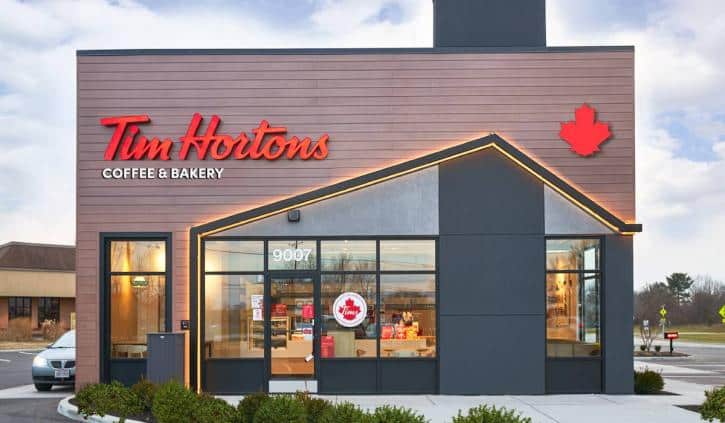
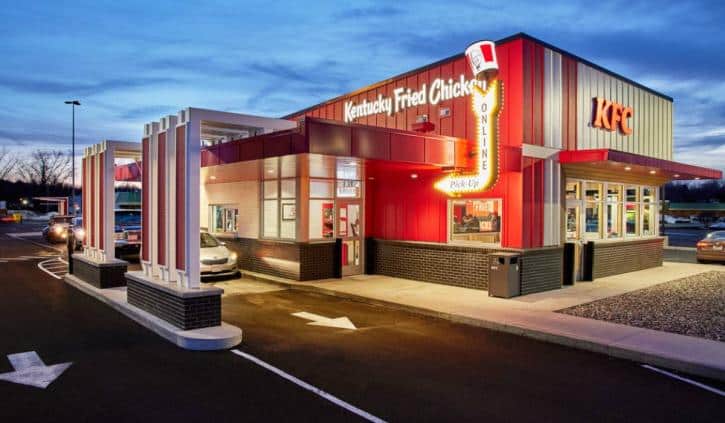


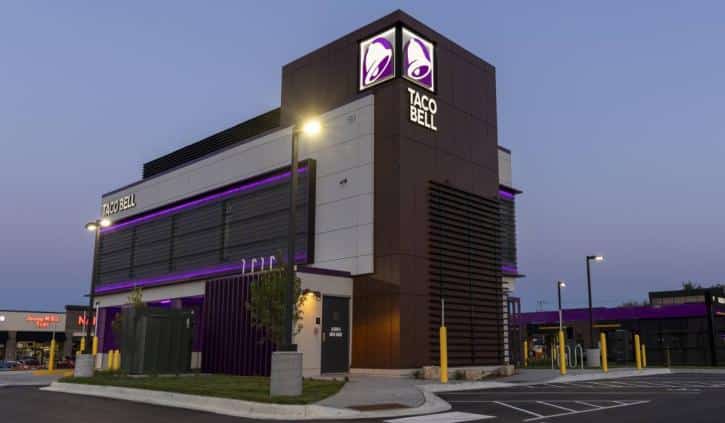



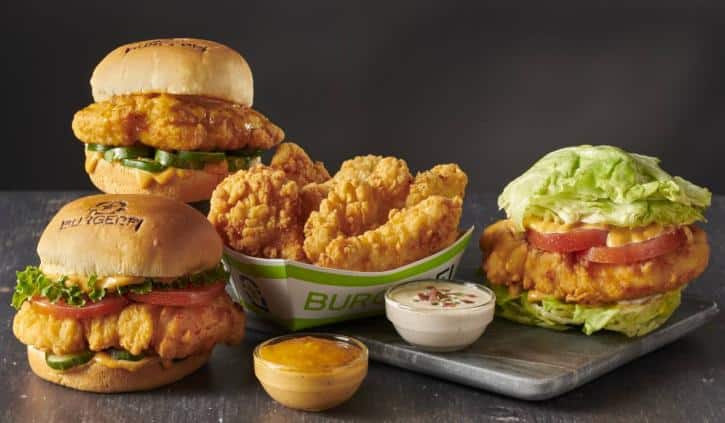


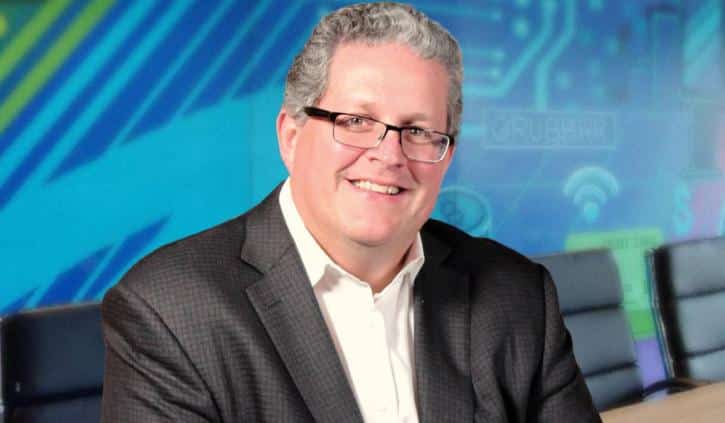
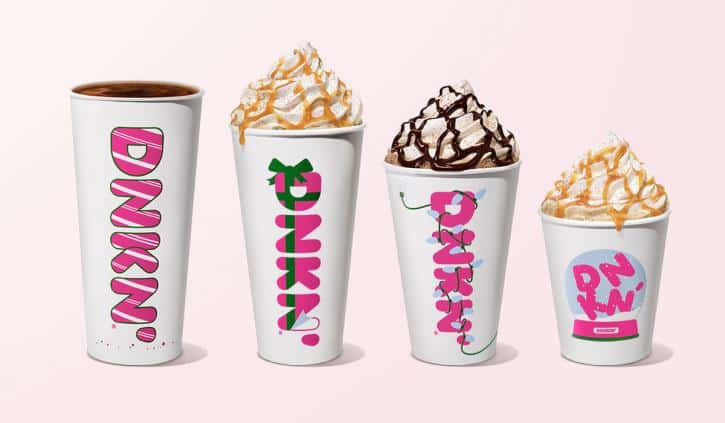

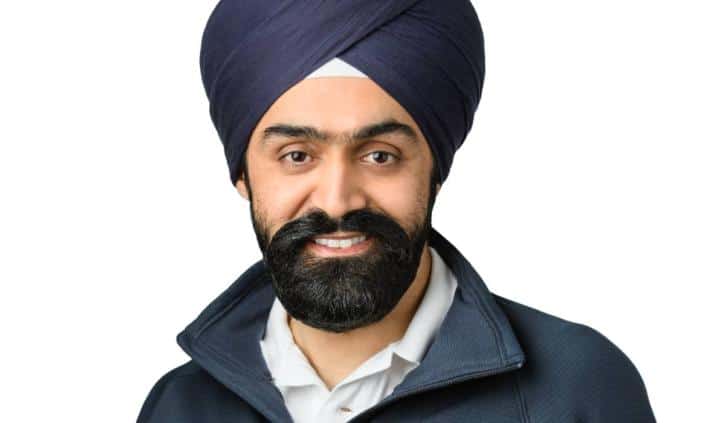
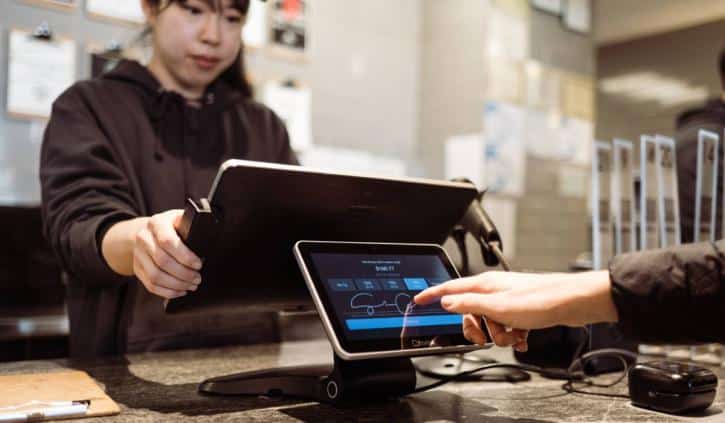



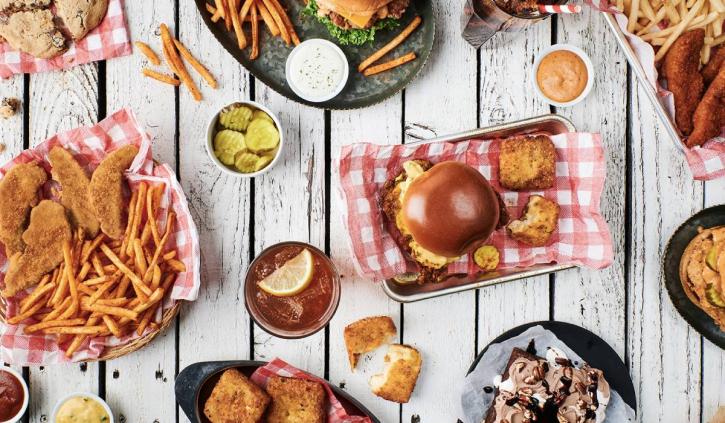

As today’s innovation-fueled climate supports, QSR’s Digital Disruptors had a lot to say this year. But if past, pandemic years were best defined as an industry catching up to others, where do restaurants go from here? What avenues and tech inventions are best to invest in for the near-term? To get ahead of whatever wave comes next? Have we progressed beyond the flash and into the substance?
To help answer some of these questions, QSR asked the Disruptors, “What do you think is the next big tech trend nobody is talking about today?” Here’s what turned up.
Markus Sturm
SVP, digital, Tim Hortons
“What particularly interests me is the idea that many retail consumer companies derive a portion of their revenues from ‘non-core’ digital services. These digital services have become easier and more cost efficient for consumer brands to integrate into their digital ecosystems. This, in large part, is thanks to cloud technologies and ‘infrastructure as a service’ providers. Look no further than Uber, Rappi or Grab as examples of this. They each started as ride-hailing or delivery companies, but quickly expanded to add several other digital services within their digital ecosystems. Those additional services now represent an impressive portion of their businesses. And for good reason: they have large and highly-engaged captive audiences including customers, drivers, and merchants, and they can tailor their digital products to seamlessly integrate into their ‘core’ business models. I believe large consumer brands might increasingly extend their digital guest relationships and app ecosystems to offer additive products and services to power their core business.”
Celeste Stevens
KFC U.S. manager of digital customer experience and engagement
“Back-of-house technology innovation to enable team member efficiency is going to be big. Fully connected kitchens that automate food prep and order fulfillment based on real-time demand, inventory levels, and forecasts will allow team members to focus on the most important parts of working in a restaurant—serving incredible food with world-class hospitality.”
Krystle Mobayeni
Cofounder, BentoBox, and head of Restaurant Solutions at Fiserv
“We hear a lot about diner data, but the real power, which gets little attention, is how technology can help restaurants make better decisions and deliver great service with this data. Knowing consumer preferences is important—what we should really be talking about is how to apply that information so restaurants can focus on the diner experience.”
Zach Goldstein
CEO and cofounder, Thanx
“While new tech and innovation usually grab the spotlight, it is imperative that restaurants today ensure that their current tech stack is easy-to-use and maximizes bandwidth across team functions. For an industry already operating on razor thin margins, restaurants have long been without the luxury of an army-sized team of marketers or data-scientists. Today, this is even more apparent as restaurants continue to navigate staffing challenges, from the field all the way up through corporate, as well as budget scrutiny due to the current macroeconomic climate. That is why the next big tech trend will be automation and ease-of-use across tech platforms. For Thanx, this means continuing to iterate on our already intuitive dashboard and lifecycle marketing tools and automations. This is an area where set-it-and-forget-it—but with the help of an intelligent engine at the core—is actually possible. We know that restaurant marketing teams are resource constrained. That is why we’ve made data-driven marketing effortless with capabilities like One-Click A/B testing and Customer Lifecycle Insights and Recommendations, both of which identify key opportunities for revenue growth and suggest automated campaigns based on real-time customer data.”
Angela Diffly
Cofounder, Restaurant Technology Network
“Newer generations are more comfortable with technology than people. And they want what they want, whenever and however they want it. I believe the quick-service restaurant is prime for radical evolution. Even faster food—in whatever shape that can take—will be table stakes. Think AI-centric hyper-automation, whereby people are not present at all to serve, and also via newly imagined drive-thru experiences (like Taco Bell’s Defy—but take that concept and explode it even more). The combination of digitally native consumers paired with smart tech innovation will put a whole new spin on fast food, and the quick-serve as we know it will become as nostalgic as the elusive Hamburgler hiding out on eBay today.”
Claiborne Irby
SVP of Customer Engagement and Strategy, Focus Brands
“From my perspective, determining what portion of technology should be owned and managed internally versus outsourced is a huge opportunity for brands. Bringing the right tools and resources in house will lead to significant competitive advantages. Knowing where and how the brands should make this investment will be important in the long run. These investments can help differentiate a brand from its competitors—those who get it right will see big wins and those who don’t will have a lot of ground to make up moving forward.”
Hope Neiman
CMO, Tillster
“Better integration across tool sets. On the consumer side, this means starting with a Customer Data Platform across all components, but there is a lot of integrated back office technology that is easy to use, integrated and requires limited skill sets that are really the next frontier.”
Jessica Valenzuela
CEO/cofounder, GoGoGuest
“CVM, or Customer Value Management, has become the biggest trend that businesses are starting to pay attention to. Customer Value Management is the process of aligning the product with sales, marketing and ongoing success with the customer to expand revenue. Restaurant operators are searching for new ways to do this, especially in the digital sphere. Gen Z, as well as most Millennials, are more interested in quality over value, and listen to influencers over celebrities and ads. Because things like customer reviews live online, and also because customer data is available, businesses need to be paying attention to what value customers see in them, and to see the value in the customer. At GoGoGuest, we believe that tech-oriented, data-savvy and curious restaurateurs are starting to see the gaps in their current tech stack in terms of the lack of data access, and actionable insights, as well as the need for an easy way to implement and respond to low revenue metrics on various channels and locations.”
Karl Goodhew
Chief technology officer, BurgerFi
“There’s not a lot of conversation about dynamic pricing but every other industry does it in some form or fashion. The retail world has been doing it with coupons that fluctuate daily and online pricing that is driven in part by data. Hotels, flights, and driving apps have been doing it for years. The restaurant industry is a lot like retail in that there are fixed costs that must be endured no matter if you have customers or not. It’s also a lot like hotels and flights in that there is a limited number of dining slots available for a given period. There may be incentive to eat a little bit earlier or a bit later to ease that rush. There may be incentives placed to order in a typical lull to drive demand. Dynamic pricing is not something the customer is used to in a restaurant so careful testing is needed to ensure there’s little downside.”
Meredith Sandland
CEO, Empower Delivery, and co-author of Delivering the Digital Restaurant
“Automation, but not in the sense of robots replacing humans. As we’ve seen in cars, electrification and smart augmentation of human operators are pre-conditions to automation. I think we will see increased adoption of electric cooking equipment, smart ovens, and software that increases human productivity in the restaurant.”
Brendan Sweeney
CEO and cofounder, Popmenu
“I’ve often said that the difference between restaurants getting by and blowing the competition away is the answer to one simple question: “How well do you know your customer?” What you serve, how you serve, how you market, how you build relationships all become smarter and better the more you know your customer. Getting a centralized view of customer preference data is going to be even more critical going forward as restaurants compete digitally. As mentioned, guests have been trained by sites like Amazon to expect—and demand—experiences that are tailored for them. That includes when they make dining decisions. It is extremely difficult to design tailored marketing outreach when your guest data is scattered across different systems that don’t talk to each other and are not intuitive. Building customer preference profiles requires consolidation, needs to be on autopilot and needs to be optimized all the time. You’ll see more restaurants moving away from multiple point solutions to one platform that captures all their guest data in one place (what they like, what they ordered and when, how they rated dishes, etc.)—and then uses AI and automation to act on that data with personalized communications that generate more orders. We see this firsthand with Popmenu’s platform.”
Sam Zietz
CEO, GRUBBRR
“The next big tech trends are: Customer Personalization—using audience and data analytics to curate personalized experiences for consumers; AI Forecasting (Sales, Employees) —using machine learning algorithms to optimize forecasts—consuming real-time data and continuously identifying new patterns; Automation and integration of FOH/BOH—using technology to connect FOH and BOH operations. Restaurants previously ran several disparate, siloed operating systems. This greatly hinders operational efficiency. GRUBBRR solves this problem by offering a fully integrated suite of products; Reporting in real time—gathering up-to-the-minute data and relaying it to users as it happens—can also be integrated with customer personalization.”
Gagan Sinha
SVP, Restaurant Technology, Inspire Brands
“In terms of the restaurant industry, I believe the next trend will be creating an operations system that acts as a “self-driving car”. What I mean by that is there are so many routine aspects of our business models that no longer need to be overseen by a person, and instead can be monitored and executed with artificial intelligence (AI). There are many tasks that can be managed with the right technology, like creating weekly schedules for team members or overseeing food equipment. If we’re able to streamline these processes with AI, employees can shift their focus to the customers and help create a more personalized experience. What can we do to simplify repetitive actions to focus on the big picture? How do we use these technological trends and progressions to provide a better experience for our guests? At Dunkin’, we’re thinking through new ways to address these questions, particularly with our drive-thru. We want to cultivate VIP experiences that recognize our guests’ commitment to the brand, including the generation of more personalized digital menu boards that present relevant suggestions based on previous order history.”
Sterling Douglass
Cofounder, CEO, Chowly
“Everyone is talking about virtual restaurants and omnichannel ordering. And they should. It’s big, and every restaurant should be looking at it. However, underneath the hood, there’s a deeper issue going on at restaurants, and it’s not robots or drones. It’s boring old data. I believe the innovation here will be the next stage of reinforcements restaurants will receive to improve their businesses.”
Savneet Singh
President and CEO, PAR Technology
Another upcoming trend on the horizon is the form factor of restaurants will change. Today, most restaurants look the same on the inside as they did 20 or 30 years ago. Customers want a branded experience while dining in, yet also want an Amazon.com experience when they have food delivered. To meet this expectation, we predict restaurants will change their shapes, their sizes, their layouts, or buildouts, to address this total reality, which includes digital orders being here to stay. Taco Bell and McDonald’s have both made the investment and reimagined their four walls and drive-thru to complement their digital landscape.
Aman Narang
Cofounder and president, Toast
“We should be talking more about how tech is helping to enable personalization—which at restaurants can actually mean a better hospitality experience. Some guests experience hospitality as engaging directly with a server who might be holding a handheld device, for example, while for another guest the desired experience is about an entirely digital, contactless interaction. It’s incredible to think about the possibilities with personalization. Imagine a world where you walk into a restaurant and the staff greets you by name, knows your food preferences and what you’d like to see on a menu-–including elements such as allergy modifications—and you simply walk out of the restaurant when you’re done because the restaurant has your preferred payment method. Toast helps enable all of this to be a reality.”
Tony Smith
Cofounder and CEO, Restaurant365
“I’m excited about tighter connections between restaurants and food vendors. I think there are a lot of gains still to come with technology that better predict ingredient orders, seamlessly order from vendors with the best prices, facilitate payments, and use group purchasing power so that small restaurants can get the same prices as the big guys. There are several solutions doing aspects of these, but I think we’ll see it more seamlessly connected in the coming years.”
Raj Suri
Founder and CEO, Presto Automation
“Japan and other parts of the world have been dealing with labor shortage much longer than we have and determined long ago that automation helps. By now, restaurants have realized that hiring incentives and other traditional solutions are not helping. Many quick-service chains are actively evaluating automation solutions or have plans for deployment. It’s no longer a question of ‘if’ but ‘when,’ and we expect to see several big chains adopt this technology in a big way next year. We also expect to see reallocation of existing staff to higher value tasks while the more mundane tasks are automated. In 2023, we also expect a renewed focus on guest experience even while leveraging automation as quick-serves try to differentiate themselves in the marketplace.”
Zhong Xu
CEO and cofounder, Deliverect
“Automation and using AI and technology to create seamless operations is what will help accelerate restaurant and food delivery industry players in the coming years. Smart technology, such as robots and drones are being increasingly incorporated across the distribution chain, from warehouses to virtual kitchens. In 2023 and beyond, we’ll see continued momentum for this smart device explosion, including increasing use of intelligent delivery robots and drones. Additionally, we expect ghost kitchens to continue in popularity as the industry continues to seek efficiencies and grapple with staffing shortages.”
Denny Marie Post
Co-president, Nextbite
“I expect we will see an increased interest in restaurants harnessing the data they are gathering from their customers, to create a better experience, including higher customer return rates and satisfaction. This needs to be truly dynamic, daily input to maximize the opportunity. Monthly look-back reporting is no longer sufficient.”
Rom Krupp
Founder and CEO, OneDine
“I’ll tell you right now the hottest thing we do is handhelds. People are just dying for labor optimization, table turn optimization, order to table, pay to table technology … the next five years, I think it will become a standard in the U.S.—there won’t be a restaurant, except maybe the fine, fine dining, that you’re not going to get your order taken next to the table and paid right there. That’s the next three five years,, between now and the next three to five years. So fast forward five years, I don’t think there will be a restaurant in the country not taking orders tableside and not paying tableside.”






